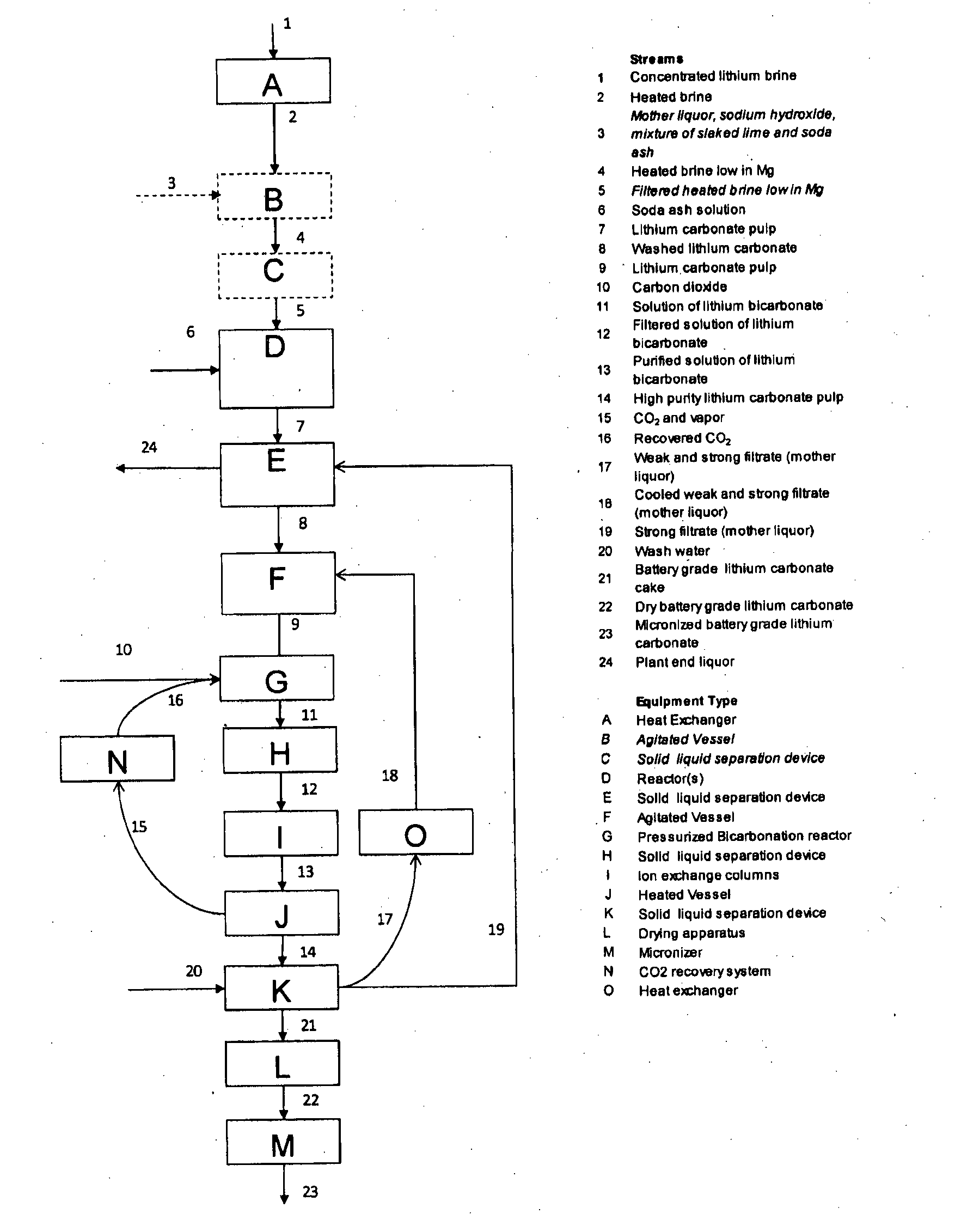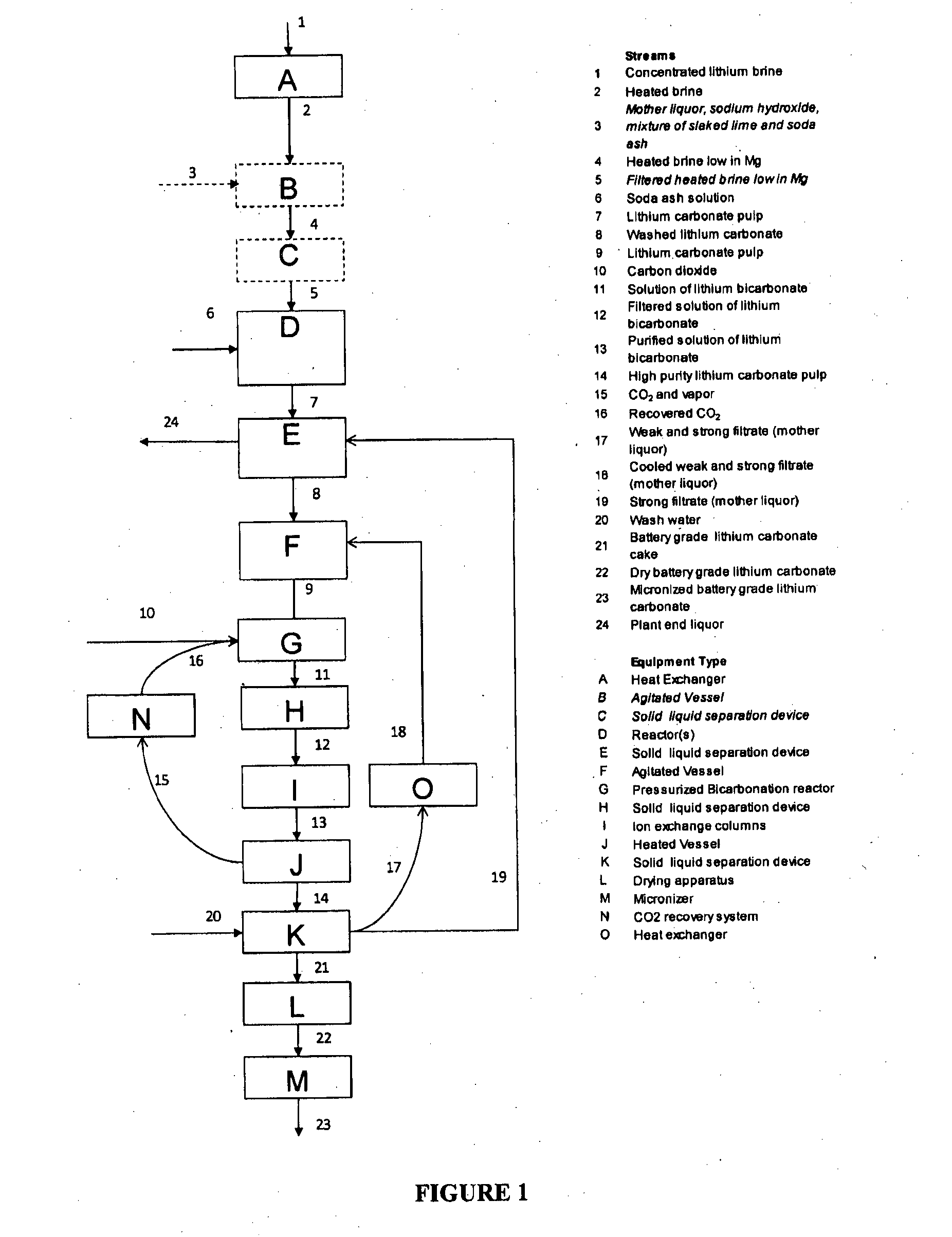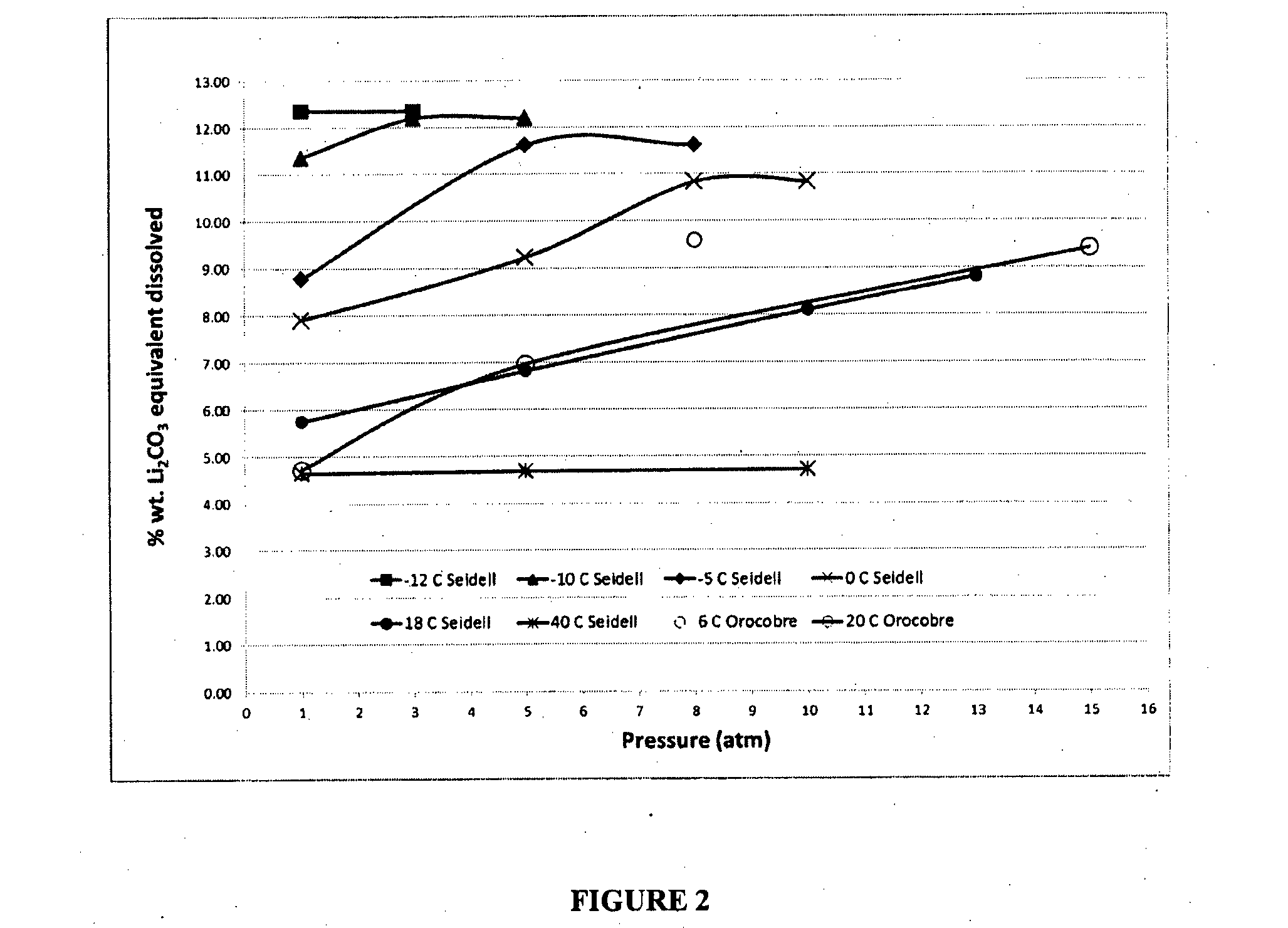Process for producing lithium carbonate from concentrated lithium brine
a lithium carbonate and concentrated technology, applied in the field of lithium carbonate production, can solve the problems of few commercial sources of lithium, technical grade lithium carbonate, and unsuitable for the more exigent lithium battery industry or pharmaceutical compositions
- Summary
- Abstract
- Description
- Claims
- Application Information
AI Technical Summary
Benefits of technology
Problems solved by technology
Method used
Image
Examples
example i
[0041]A lithium containing brine was pumped from the well field of the Salar de Olaroz, located in Argentina. The brine was treated with slaked lime in order to remove the magnesium as magnesium hydroxide with a co-precipitation of calcium sulfate. Subsequently the brine was concentrated in solar evaporation ponds until a concentration of 0.65% wt lithium / wt brine was obtained from the test facilities at Salar de Olaroz. Impure brine with 0.65% wt lithium / wt brine was used as starting material for the lithium carbonate production at a lab scale according to the present invention. This brine was heated at 70° C. at 1 atm and a 25% w / w soda ash solution was added to precipitate impure lithium carbonate. The impure lithium carbonate was filtered and washed with deionized water.
[0042]The impure lithium carbonate was mixed with water and sent to a reactor where it was dissolved with a 30% excess of the stoichiometric amount of CO2 with respect to LiHCO3 at atmospheric pressure and 18° C....
example ii
[0043]A lithium containing brine was pumped from the well field of the Salar de Olaroz, located in Argentina. The brine was treated with slaked lime in order to remove the magnesium as magnesium hydroxide with a co-precipitation of calcium sulfate. Subsequently, the brine was concentrated in solar evaporation ponds until a concentration of 0.69% wt lithium / wt brine was obtained. This brine was used as starting material for the lithium carbonate production process of the present invention. The results of chemical analysis of the concentrated brine is shown in Table IV.
TABLE IVChemical analysis for lithium containing brineChemical SpeciesBrine Content (% wt)Li0.69Na7.73K4.05Mg0.001Ca0.018B0.382SO43.11
[0044]In the pilot plant, the brine was heated at 75° C., subsequently a 28% w / w soda ash solution was added in order to precipitate impure lithium carbonate. The impure lithium carbonate was filtered and washed with deionized water. The impure lithium carbonate was mixed with cooled moth...
example iii
[0045]The bicarbonation process was conducted at different temperatures and pressures in order to define lithium bicarbonate solubility as function of these parameters. Test T1 through T3 were each conducted under an atmosphere of CO2 gas. T4 test was conducted at atmospheric pressure. T1, T2 and T4 were conducted at 20° C. and T3 at 6° C. T1 was conducted in a 2 litre stainless steel Parr autoclave. T2, T3 and T4 were conducted in a 4 litre titanium Parr autoclave. The reaction slurry of test T4 was sparged with CO2 gas in glass reactor. In all samples a 10 percent excess of lithium carbonate and CO2 gas was added in order to assure the saturation of lithium bicarbonate. The reactors were operated until a constant pH was obtained. The test conditions are given in Table VI and the results are plotted FIG. 2.
TABLE VIBicarbonation process test conditionsTest NumberTemperature (° C.)Pressure (atm)T1205T22015T368T4201
PUM
| Property | Measurement | Unit |
|---|---|---|
| Temperature | aaaaa | aaaaa |
| Temperature | aaaaa | aaaaa |
| Temperature | aaaaa | aaaaa |
Abstract
Description
Claims
Application Information
 Login to View More
Login to View More - R&D
- Intellectual Property
- Life Sciences
- Materials
- Tech Scout
- Unparalleled Data Quality
- Higher Quality Content
- 60% Fewer Hallucinations
Browse by: Latest US Patents, China's latest patents, Technical Efficacy Thesaurus, Application Domain, Technology Topic, Popular Technical Reports.
© 2025 PatSnap. All rights reserved.Legal|Privacy policy|Modern Slavery Act Transparency Statement|Sitemap|About US| Contact US: help@patsnap.com



